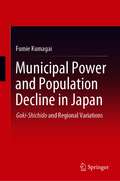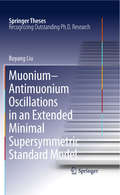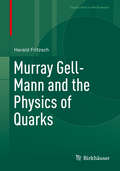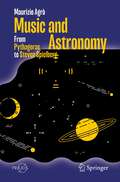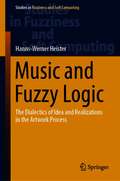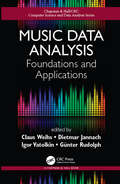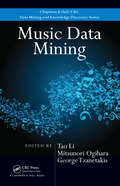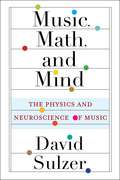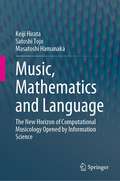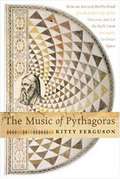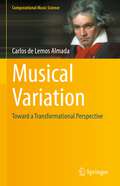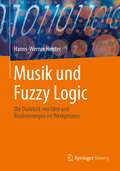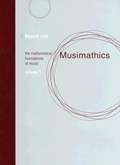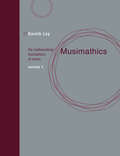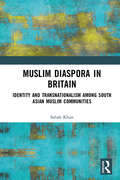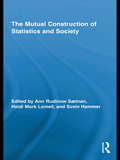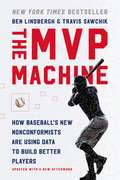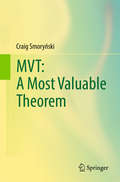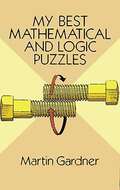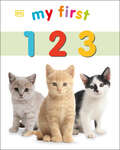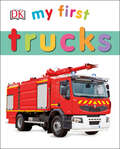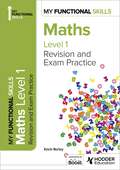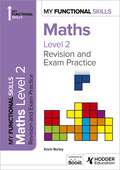- Table View
- List View
Municipal Power and Population Decline in Japan: Goki-Shichido and Regional Variations
by Fumie KumagaiThis book provides an insightful sociological study of the declining Japanese population, using statistical analysis to establish the significance of municipal power using demographic data on national, regional, prefectural and municipal levels. Penned by one of Japan's eminent sociologists, it provides a quantitative characterization of population decline in Japan with a focus on regional variation, and identifies the principal explanatory factors through GPI statistical software tools such as G-census and EvaCva, within a historical perspective. Furthermore, it offers a qualitative assessment of what constitutes ‘municipal power’ as this relates to regional/local revitalization as a means of addressing municipal population decline. Using Goki-Shichido as a theoretical framework, this book pays special attention to municipal variations within the same prefecture, presenting a completely unique approach. In combining these two dimensions of analyses, the book successfully reveals the impact of municipal power and socio-cultural identity of social capital in the region, from both quantitative and qualitative perspectives at the municipal level. Demography issues in Japan have been receiving increasing attention among researchers given the growing number of declining populations in developed countries, in tandem with rapid aging and low fertility trends. Providing an original and unique contribution to regional population analysis in the fields of regional demography, historical demography and regional population policy, this book shows that the revitalization of the community is vital if Japan is to increase its population, so as to renew a community ‘raison d'être’. The book is of interest to scholars of Asian studies more broadly, and to sociologists, demographers, and policymakers interested in population studies, specifically."Providing an informative and vivid overview of the demographic situation of Japan, the author offers excellent suggestions for effective regional policy in confronting a shrinking society. This book presents a unique analysis of the regional variations on small municipal levels, with demographic variables, social indicators and historical identities. An original contribution to regional population analysis in the fields of regional population policy, regional demography and historical demography."- Toshihiko Hara, Professor Emeritus, Sapporo City University
Muonium-antimuonium Oscillations in an Extended Minimal Supersymmetric Standard Model
by Boyang LiuThis innovative work investigated two models where the muonium-antimuonium oscillation process was mediated by massive Majorana neutrinos and sneutrinos. First, we modified the Standard Model only by the inclusion of singlet right-handed neutrinos and allowing for general renormalizable interactions producing neutrino masses and mixing. The see-saw mechanism was employed to explain the smallness of the observed neutrino masses. A lower bound on the righthanded neutrino mass was constructed using the experimental limits set by the nonobservation of the muonium-antimuonium oscillation process. Second, we modified the Minimal Supersymmetric Standard Model by the inclusion of three right-handed neutrino superfields. The experimental result of the muonium-antimuonium oscillation process generated a lower bound on the ratio of the two Higgs field VEVs. This work helps to set up relationships between the experimental result of the muonium-antimuonium oscillation process and the model parameters in two specific models. Further improvement of the experiment in the future can generate more stringent bounds on the model parameters using the procedure developed by this work.
Murray Gell-Mann and the Physics of Quarks (Classic Texts in the Sciences)
by Harald FritzschMurray Gell-Mann, Physics Nobel Prize Laureate in 1969 is known for his theoretical work on elementary particle physics and the introduction of quarks and together with H. Fritzsch the “Quantum Chromodynamics”. Based on four sections the Editor gives an overview on the work of Gell-Mann and his contributions to various aspects of the physics, related to quarks. His most important and influential papers were selected and reprinted so that the reader easily can check the original work of Gell-Mann.
Music and Astronomy: From Pythagoras to Steven Spielberg (Springer Praxis Books)
by Maurizio AgròThis book explores the profound and ancient relationship between music and astronomy. Throughout history, Music has occupied a significant place among the disciplines of the Quadrivium, which also include Geometry, Arithmetic, and Astronomy. The captivating bond between these two realms has not only inspired eminent scientists like Kepler, Newton, and Einstein, but has also captured the imagination of NASA and astronauts in modern times. The author delves into various aspects of the intersection between music and astronomy, encompassing everything from ancient cosmological beliefs to groundbreaking discoveries such as the cosmic background radiation and gravitational waves. This enthralling theme has not only stimulated renowned artists like David Bowie and Elton John, but has also served as a muse for movies like Close Encounters of the Third Kind. Within the book, readers will find an extensive photo gallery and a specially curated soundtrack that enhances the reading experience. It caters to a broad audience, appealing to those with a general interest in both music and astronomy, as well as to specialized individuals in either field of study.
Music and Fuzzy Logic: The Dialectics of Idea and Realizations in the Artwork Process (Studies in Fuzziness and Soft Computing #406)
by Hanns-Werner HeisterThis book unfolds the manifold, complex and intertwined relations between Fuzzy Logic and music in a first comprehensive overview on this topic: systematically as an outline, as completely as possible, in the aspects of Fuzzy Logic in this relation, and especially in music as a process with three main phases, five anthropological layers, and thirteen forms of existence of the art work (Classics, Jazz, Pop, Folklore). Being concerned with the ontological, gnoseological, psychological, and (music-) aesthetical status and the relative importance of different phenomena of relationship between music and Fuzzy Logic, the explication follows the four main principles (with five phenotypes) of Fuzzy Logic with respect to music: similarity, sharpening 1 as filtering, sharpening 2 as crystallization, blurring, and variation. The book reports on years of author’s research on topics that have been only little explored so far in the area of Music and Fuzzy Logic. It merges concepts of music analysis with fuzzy logical modes of thinking, in a unique way that is expected to attract both specialists of music and specialists of Fuzzy Logic, and also non-specialists in both fields. The book introduces the concept of dialectic between sharpening and – conscious – “blurring”. In turn, some important aspects of this dialectic are discussed, placing them in an historical dimension, and ending in the postulation of a 'musical turn' in the sciences, with some important reflections concerning a “Philosophy of Fuzzy Logic”. Moreover, a production-oriented thinking is borrowed from fuzzy logic to musicology in this book, opening new perspectives in music, and possibly also in other artistic fields.
Music Data Analysis: Foundations and Applications (Chapman & Hall/CRC Computer Science & Data Analysis)
by Claus Weihs, Dietmar Jannach, Igor Vatolkin and Günter RudolphThis book provides a comprehensive overview of music data analysis, from introductory material to advanced concepts. It covers various applications including transcription and segmentation as well as chord and harmony, instrument and tempo recognition. It also discusses the implementation aspects of music data analysis such as architecture, user interface and hardware. It is ideal for use in university classes with an interest in music data analysis. It also could be used in computer science and statistics as well as musicology.
Music Data Mining (Chapman & Hall/CRC Data Mining and Knowledge Discovery Series)
by Tao Li Mitsunori Ogihara George TzanetakisThe research area of music information retrieval has gradually evolved to address the challenges of effectively accessing and interacting large collections of music and associated data, such as styles, artists, lyrics, and reviews. Bringing together an interdisciplinary array of top researchers, Music Data Mining presents a variety of approaches to
Music, Math, and Mind: The Physics and Neuroscience of Music
by Professor David SulzerWhy does a clarinet play at lower pitches than a flute? What does it mean for sounds to be in or out of tune? How are emotions carried by music? Do other animals perceive sound like we do? How might a musician use math to come up with new ideas?This book offers a lively exploration of the mathematics, physics, and neuroscience that underlie music in a way that readers without scientific background can follow. David Sulzer, also known in the musical world as Dave Soldier, explains why the perception of music encompasses the physics of sound, the functions of the ear and deep-brain auditory pathways, and the physiology of emotion. He delves into topics such as the math by which musical scales, rhythms, tuning, and harmonies are derived, from the days of Pythagoras to technological manipulation of sound waves. Sulzer ranges from styles from around the world to canonical composers to hip-hop, the history of experimental music, and animal sound by songbirds, cetaceans, bats, and insects. He makes accessible a vast range of material, helping readers discover the universal principles behind the music they find meaningful.Written for musicians and music lovers with any level of science and math proficiency, including none, Music, Math, and Mind demystifies how music works while testifying to its beauty and wonder.
Music, Mathematics and Language: The New Horizon of Computational Musicology Opened by Information Science
by Keiji Hirata Satoshi Tojo Masatoshi HamanakaThis book presents a new approach to computational musicology in which music becomes a computational entity based on human cognition, allowing us to calculate music like numbers. Does music have semantics? Can the meaning of music be revealed using symbols and described using language? The authors seek to answer these questions in order to reveal the essence of music. Chapter 1 addresses a very fundamental point, the meaning of music, while referring to semiotics, gestalt, Schenkerian analysis and cognitive reality. Chapter 2 considers why the 12-tone equal temperament came to be prevalent. This chapter serves as an introduction to the mathematical definition of harmony, which concerns the ratios of frequency in tonic waves. Chapter 3, “Music and Language,” explains the fundamentals of grammar theory and the compositionality principle, which states that the semantics of a sentence can be composed in parallel to its syntactic structure. In turn, Chapter 4 explains the most prevalent score notation – the Berklee method, which originated at the Berklee School of Music in Boston – from a different point of view, namely, symbolic computation based on music theory. Chapters 5 and 6 introduce readers to two important theories, the implication-realization model and generative theory of tonal music (GTTM), and explain the essence of these theories, also from a computational standpoint. The authors seek to reinterpret these theories, aiming at their formalization and implementation on a computer. Chapter 7 presents the outcomes of this attempt, describing the framework that the authors have developed, in which music is formalized and becomes computable. Chapters 8 and 9 are devoted to GTTM analyzers and the applications of GTTM. Lastly, Chapter 10 discusses the future of music in connection with computation and artificial intelligence.This book is intended both for general readers who are interested in music, and scientists whose research focuses on music information processing. In order to make the content as accessible as possible, each chapter is self-contained.
The Music of Pythagoras: How an Ancient Brotherhood Cracked the Code of the Universe and Lit the Path from Antiquity to Outer Space
by Kitty FergusonFerguson, a musician and author of several books on the history of science, presents an entertaining, erudite history of the work of Pythagoras, from its murky origins in the sixth century B.C.E. to the present. She explores the use of Pythagorean mathematics in Greek, Roman, Arabic and Western European intellectual tradition in a clear, unbiased manner, with many diagrams and explanations to aid those for who haven't kept up their high school math.
Musical Variation: Toward a Transformational Perspective (Computational Music Science)
by Carlos de AlmadaThis book offers an in-depth analysis of musical variation through a systematic approach, heavily influenced by the principles of Grundgestalt and developed variations, both created by the Austrian composer Arnold Schoenberg (1874-1951). The author introduces a new transformational-derivative model and the theory that supports it, specifically crafted for the examination of tonal music.The idea for this book emerged during a sabbatical at Columbia University, while the content is the product of extensive research conducted at the Federal University of Rio de Janeiro, resulting in the development of the Model of Derivative Analysis. This model places emphasis on the connections between musical entities rather than viewing them as separate entities. As a case study, the Intermezzo in A Major Op.118/2 by Brahms is selected for analysis.The author's goal is to provide a formal and structured approach while maintaining the text's readability and appeal for both musicians and mathematicians in the field of music theory. The book concludes with the author's recommendations for further research.
Musik und Fuzzy Logic: Die Dialektik von Idee und Realisierungen im Werkprozess
by Hanns-Werner HeisterDas Buch entfaltet die vielfältigen Wechselbeziehungen zwischen Fuzzy Logic und Musik in einem ersten umfassenden Überblick. Es behandelt systematisch sowohl die in diesem Zusammenhang relevanten Aspekte der Fuzzy Logic als auch die der Musik. Im Werkprozess mit drei Hauptphasen und dreizehn Existenzformen des Kunstwerks, in den Musikarten Klassik, Jazz, Pop, Folklore, zeigen sich die vier Hauptprinzipien (mit fünf Phänotypen) der Fuzzy Logic in Bezug auf die Musik: Ähnlichkeit, Schärfung I als Filterung und Schärfung II als Kristallisation, Verwischung, Variation. Ein neues Konzept ist die Dialektik zwischen Schärfung und – bewusster – "Unschärfe" durch die Verwischung. Abschließend werden Aspekte der mehrdimensionalen Dialektik in historischer Dimension entwickelt, samt einem ‚Musical Turn‘ in den Wissenschaften und Überlegungen zu einer 'Philosophie der FL'. Das produktionsorientierte Denken der Fuzzy Logic und die Musik-Analyse befruchten sich wechselseitig.
Musimathics: The Mathematical Foundations of Music, Volume 1
by Gareth LoyMathematics can be as effortless as humming a tune, if you know the tune, writes Gareth Loy. In Musimathics, Loy teaches us the tune, providing a friendly and spirited tour of the mathematics of music--a commonsense, self-contained introduction for the nonspecialist reader. It is designed for musicians who find their art increasingly mediated by technology, and for anyone who is interested in the intersection of art and science. In this volume, Loy presents the materials of music (notes, intervals, and scales); the physical properties of music (frequency, amplitude, duration, and timbre); the perception of music and sound (how we hear); and music composition. Musimathics is carefully structured so that new topics depend strictly on topics already presented, carrying the reader progressively from basic subjects to more advanced ones. Cross-references point to related topics and an extensive glossary defines commonly used terms. The book explains the mathematics and physics of music for the reader whose mathematics may not have gone beyond the early undergraduate level. Calling himself "a composer seduced into mathematics," Loy provides answers to foundational questions about the mathematics of music accessibly yet rigorously. The topics are all subjects that contemporary composers, musicians, and musical engineers have found to be important. The examples given are all practical problems in music and audio. The level of scholarship and the pedagogical approach also make Musimathics ideal for classroom use. Additional material can be found at a companion web site.
Musimathics, Volume 1: The Mathematical Foundations of Music
by Gareth LoyA commonsense, self-contained introduction to the mathematics and physics of music; essential reading for musicians, music engineers, and anyone interested in the intersection of art and science.“Mathematics can be as effortless as humming a tune, if you know the tune,” writes Gareth Loy. In Musimathics, Loy teaches us the tune, providing a friendly and spirited tour of the mathematics of music—a commonsense, self-contained introduction for the nonspecialist reader. It is designed for musicians who find their art increasingly mediated by technology, and for anyone who is interested in the intersection of art and science.In Volume 1, Loy presents the materials of music (notes, intervals, and scales); the physical properties of music (frequency, amplitude, duration, and timbre); the perception of music and sound (how we hear); and music composition. Calling himself “a composer seduced into mathematics,” Loy provides answers to foundational questions about the mathematics of music accessibly yet rigorously. The examples given are all practical problems in music and audio.Additional material can be found at http://www.musimathics.com.
Muslim Diaspora in Britain: Identity and Transnationalism among South Asian Muslim Communities
by Sabah KhanThis book explores the idea of Muslim diaspora in context of Muslim communities in the United Kingdom. It critically looks at the notion of ummah and presents a comprehensive account of South Asian Muslims in London. Employing qualitative research methods and drawing on extensive fieldwork, it delves into the identification and transnational connections of Muslims in Britain. It shows the ways in which religious identity, practices and experiences may instigate diasporas focusing on South Asian Muslims in London — Indian, Pakistani and Bangladeshi Muslims — who account for 3.6 per cent of the total population. Further, the inter as well as intra group dynamics and studies how Muslims of different ethnic background settled in the same geo-political context engage with the notion of ummah. The volume will be of great interest to scholars and researchers of religion, especially Islam, politics, British studies and South Asian studies.
The Mutual Construction of Statistics and Society (Routledge Advances in Research Methods)
by Ann Rudinow SætnanStatistics are often seen as simple, straightforward, and objective descriptions of society. However, what we choose to count, what we choose not to count, who does the counting, and the categories and values we choose to apply when counting, matter. This volume addresses the ways in which statistics and numbers are gathered and applied in social science research. The contributors argue that we must become more aware of the power and the limitations of statistics. Learning statistics needs to be about more than simply mastering the techniques of using the tool; it needs to also be about learning the dangers of that tool and learning to control it within social and ethical bounds. These dangers lie in the routines through which statistics are applied; the discourses from which they emerge and into which they are deployed; the power relations created by those discourses; and the assumptions, meanings, and categories statistics carry with them in those discourses. This volume will be necessary reading for students and scholars using quantitative data within the social sciences.
The MVP Machine: How Baseball's New Nonconformists Are Using Data to Build Better Players
by Ben Lindbergh Travis SawchikMove over, Moneyball -- a cutting-edge look at major league baseball's next revolution: the high-tech quest to build better players. As bestselling authors Ben Lindbergh and Travis Sawchik reveal in The MVP Machine, the Moneyball era is over. Fifteen years after Michael Lewis brought the Oakland Athletics' groundbreaking team-building strategies to light, every front office takes a data-driven approach to evaluating players, and the league's smarter teams no longer have a huge advantage in valuing past performance.Lindbergh and Sawchik's behind-the-scenes reporting reveals:How the 2017 Astros and 2018 Red Sox used cutting-edge technology to win the World SeriesHow undersized afterthoughts José Altuve and Mookie Betts became big sluggers and MVPsHow polarizing pitcher Trevor Bauer made himself a Cy Young contenderHow new analytical tools have overturned traditional pitching and hitting techniquesHow a wave of young talent is making MLB both better than ever and arguably worse to watchInstead of out-drafting, out-signing, and out-trading their rivals, baseball's best minds have turned to out-developing opponents, gaining greater edges than ever by perfecting prospects and eking extra runs out of older athletes who were once written off. Lindbergh and Sawchik take us inside the transformation of former fringe hitters into home-run kings, show how washed-up pitchers have emerged as aces, and document how coaching and scouting are being turned upside down. The MVP Machine charts the future of a sport and offers a lesson that goes beyond baseball: Success stems not from focusing on finished products, but from making the most of untapped potential.
MVT: A Most Valuable Theorem
by Craig SmorynskiThis book is about the rise and supposed fall of the mean value theorem. It discusses the evolution of the theorem and the concepts behind it, how the theorem relates to other fundamental results in calculus, and modern re-evaluations of its role in the standard calculus course. The mean value theorem is one of the central results of calculus. It was called "the fundamental theorem of the differential calculus" because of its power to provide simple and rigorous proofs of basic results encountered in a first-year course in calculus. In mathematical terms, the book is a thorough treatment of this theorem and some related results in the field; in historical terms, it is not a history of calculus or mathematics, but a case study in both. MVT: A Most Valuable Theorem is aimed at those who teach calculus, especially those setting out to do so for the first time. It is also accessible to anyone who has finished the first semester of the standard course in the subject and will be of interest to undergraduate mathematics majors as well as graduate students. Unlike other books, the present monograph treats the mathematical and historical aspects in equal measure, providing detailed and rigorous proofs of the mathematical results and even including original source material presenting the flavour of the history.
My Best Mathematical and Logic Puzzles (Dover Recreational Math Ser.)
by Martin GardnerOver a period of 25 years as author of the Mathematical Games column for Scientific American, Martin Gardner devoted a column every six months or so to short math problems or puzzles. He was especially careful to present new and unfamiliar puzzles that had not been included in such classic collections as those by Sam Loyd and Henry Dudeney. Later, these puzzles were published in book collections, incorporating reader feedback on alternate solutions or interesting generalizations.The present volume contains a rich selection of 70 of the best of these brain teasers, in some cases including references to new developments related to the puzzle. Now enthusiasts can challenge their solving skills and rattle their egos with such stimulating mind-benders as The Returning Explorer, The Mutilated Chessboard, Scrambled Box Tops, The Fork in the Road, Bronx vs. Brooklyn, Touching Cigarettes, and 64 other problems involving logic and basic math. Solutions are included.
My First 123 (My First Board Books)
by DKHelp your toddler learn all about numbers and counting in My First 123. Count from 1 to 10, then up to 100 with your toddler, and introduce adding and taking away with this engaging board book which keeps early learning simple. With colorful, bright photographs alongside clear word-labels your little one will master numbers in no time.Perfect for encouraging children to build numeracy skills My First 123 helps toddlers grasp early concepts. Read it together and help them turn the pages, practice counting, then take a look at adding up and taking away.
My First Math Book (Everyday Mathematics)
by University of Chicago Mathematics Project Jean Bell Max Bell David W. BeerMy First Trucks (My First Board Books)
by DKRelaunch of DK's My First seriesEncourage talking and build vocabulary with this fun first picture book. My First Trucks features 17 spreads of trucks and vehicles. Clear word labels accompany each image. Spreads include: Trucks, Diggers, Gas tanker, Car transporter, Emergency, Road trains, Snow plow, Logging truck, Find the load, Monster truck, Excavator, Bulldozer, Tractor, Road roller, Colorful trucks, and Truck shapes.
My Functional Skills: Revision and Exam Practice for Maths Level 1
by Kevin NorleyTarget success in Level 1 Maths with this brand-new functional skills revision and exam practice guide.Suitable for all functional skills courses, this guide explains the key content you need to understand the topics on your course, so you can revise effectively and practise for your exams with the types of questions you will be asked.Now I get it! Grasp even the most difficult topics with clear and simple explanations and questions to test your understandingHow do I answer this? Learn how to unpick the types of exam questions you will face with clear guidance on how to structure your answersSo what do I need to do to pass? Improve your exam skills with hundreds of practice questions for you to try, as well as worked examples and model answers to check you are on the path to successWith a revision planner, exam countdown timetable to help you pace your revision and glossary of all key terms, My Functional Skills has all you need to approach your exams with real confidence.
My Functional Skills: Revision and Exam Practice for Maths Level 1
by Kevin NorleyTarget success in Level 1 Maths with this brand-new functional skills revision and exam practice guide.Suitable for all functional skills courses, this guide explains the key content you need to understand the topics on your course, so you can revise effectively and practise for your exams with the types of questions you will be asked.Now I get it! Grasp even the most difficult topics with clear and simple explanations and questions to test your understandingHow do I answer this? Learn how to unpick the types of exam questions you will face with clear guidance on how to structure your answersSo what do I need to do to pass? Improve your exam skills with hundreds of practice questions for you to try, as well as worked examples and model answers to check you are on the path to successWith a revision planner, exam countdown timetable to help you pace your revision and glossary of all key terms, My Functional Skills has all you need to approach your exams with real confidence.
My Functional Skills: Revision and Exam Practice for Maths Level 2
by Kevin NorleyTarget success in Level 2 Maths with this brand-new functional skills revision and exam practice guide.Suitable for all functional skills courses, this guide explains the key content you need to understand the topics on your course, so you can revise effectively and practise for your exams with the types of questions you will be asked.Now I get it! Grasp even the most difficult topics with clear and simple explanations and questions to test your understanding How do I answer this? Learn how to unpick the types of exam questions you will face with clear guidance on how to structure your answersSo what do I need to do to pass? Improve your exam skills with hundreds of practice questions for you to try, as well as worked examples and model answers to check you are on the path to successWith a revision planner, exam countdown timetable to help you pace your revision and glossary of all key terms, My Functional Skills has all you need to approach your exams with real confidence.
